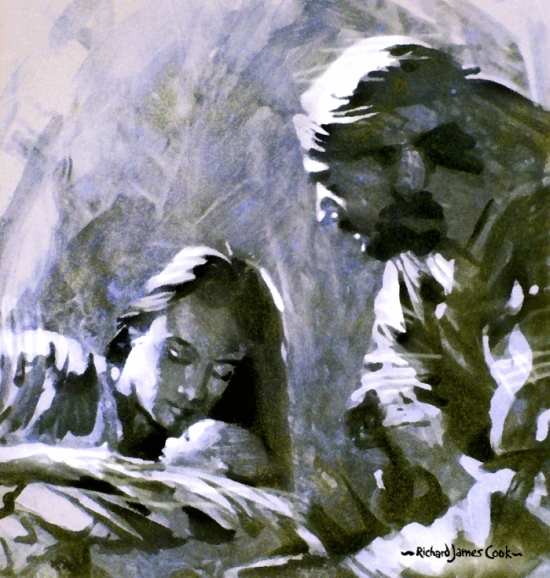We could say the Lord’s love “has always been and will always be,” but even that really doesn’t cover it – the Lord is beyond time, and in fact time came from Him. We could say that Lord’s love is expressed “everywhere and in everything,” but even that really doesn’t cover it – the Lord is beyond both space and the stuff that fills space, and in fact space and stuff both came from Him.
So the Lord’s love never changes: It simply is. And the expression of that love – what the Writings call “divine truth” – never changes: It simply is.
People, on the other hand, change all the time, both as individuals and as societies. We turn toward the Lord and toward each other; we turn away from the Lord and away from each other. We look to spiritual things; we look to bodily things. That means our reception of the Lord’s love changes all the time, and the Lord’s love, in its complete desire to be joined to us, adapts its external forms constantly to try to reach us.
That’s what’s described here, in John 1:6-18. Humankind had always received the divine truth, but the forms had become more external as people got more external. Among the earliest, most innocent people The Lord could flow in directly; later he reached people through the minds, using symbolic stories and nature as a container. As people became entirely external, however, His love flowed out in the stony form of the laws of Moses. Understood spiritually, these laws and the other stories and prophecies of the Old Testament contain infinite ideas about the Lord and connections to His love – they contain all of the divine truth. But the Children of Israel themselves couldn’t understand that; the best they could do was obey.
That historic process is described in verses 9-13, which show the creative and sustaining power of divine truth (represented by both “the Light” and “the Word”), as well as the fact that those who received it became “sons of God,” or angels in heaven. As time went on, though, most people “received him not” and “knew him not.” In fact, as the Jewish leaders twisted the externals of Scripture to their own selfish ends, the world grew so evil that according to the Writings humanity was in danger of losing its connection to the Lord altogether.
So “the Word” – divine truth, the expression of the Lord’s love – was “made flesh” in the form of Jesus. In a way, this was the most external form the divine truth could take, extending from spiritual reality to give itself a physical form. But the purpose was to turn the process around: Jesus would reveal the deeper meanings of Scripture and teach the divine truth more directly, through commandments of love and caring. He would start humanity on a spiritual journey back toward a more internal life, one more receptive of the Lord’s love.
So what’s the role of John the Baptist here? John represents the external, literal meaning of the Old Testament, and to “witness” means to confirm what is good by using the things we know to be true. So John here witnesses first to “the light,” reminding the people of the time that Scripture is holy and urging them to return to its forms; and later to Jesus, confirming through the letter of Scripture that he was the promised Messiah, come to offer us truth and grace – which represents the delight we feel in things that are true – and ultimately to “declare” the Father to us, or to bring us into connection with the love that is the Lord’s essence.
(Riferimenti:
The Apocalypse Explained 151:4, 294 [16])







